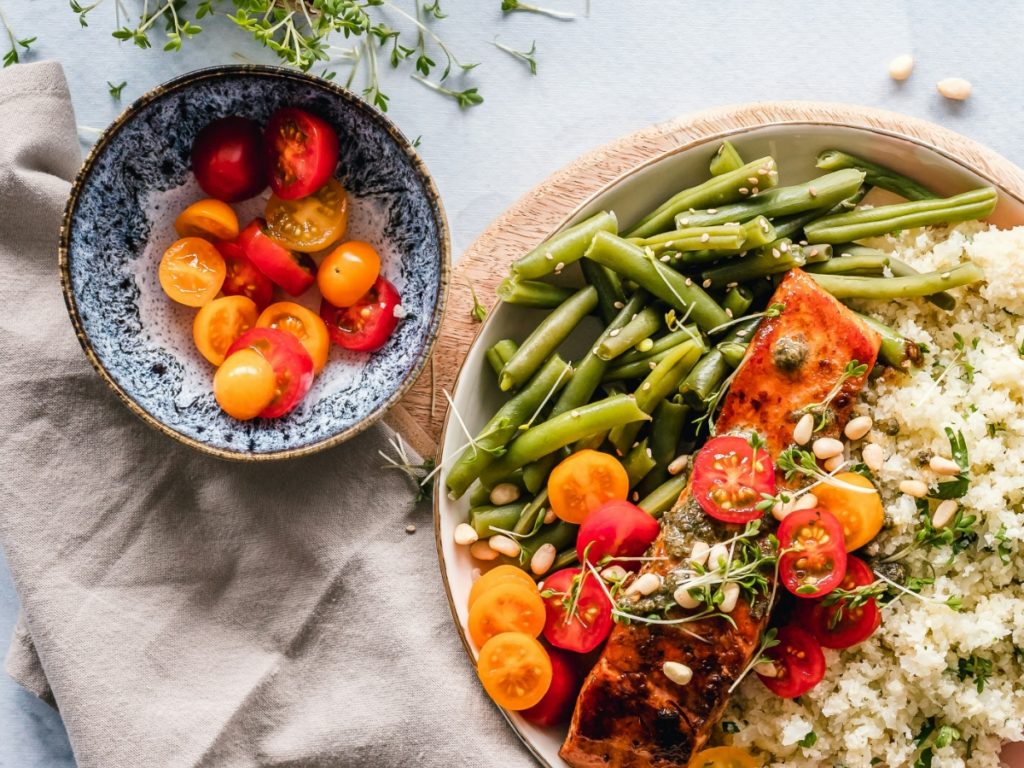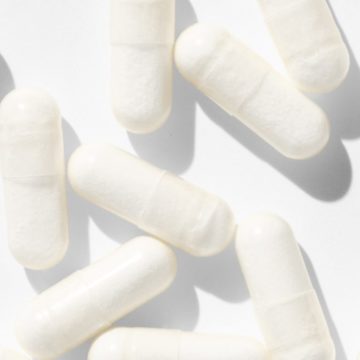Weight loss medications like Saxenda can help you if you’re struggling to reach your weight goals. But, it’s important that you make lifestyle changes to maximise your results. Eating a balanced diet is essential to getting the most from Saxenda, but it can be hard to know where to start. Here’s our expert guide to your Saxenda diet plan, which foods to eat and avoid, and the other treatments you can try to boost your weight loss.
What is Saxenda?
Saxenda contains the active ingredient liraglutide, which belongs to a class of drugs called GLP-1 receptor agonists. If you have a BMI over 30 — or over 27 and have weight-related medical conditions like high blood pressure, diabetes, heart disease and raised cholesterol — you could be eligible to try Saxenda.
You take Saxenda via subcutaneous injection — that means just under the skin, usually in the upper arm, abdomen or thigh. Unlike other popular weight loss treatments, which you inject weekly, you take Saxenda as a daily dose.
How does Saxenda work?
GLP-1 medication like Saxenda works by mimicking a natural hormone in your body that helps control blood sugar levels. This helps prevent hunger pangs and curb food cravings. Saxenda also slows gastric emptying, or the rate at which your stomach empties after you’ve eaten, which keeps you full for longer. Both of these effects help you reduce your portion size when eating, lowering your calorie intake and leading to weight loss.
Clinical trials have found that Saxenda can help you lose 5–10% of your body weight. [1] You should combine Saxenda with manageable lifestyle changes, like a balanced diet and increased physical activity, for best results.
What should you eat on Saxenda?
Following a balanced diet is essential to get the most from Saxenda. It’s important you make healthier choices without developing a bad relationship with food, as you still need to get enough calories to fuel your body. Here are our Saxenda diet tips:
- Eat plenty of complex carbohydrates. These digest slowly, which keeps you full for longer, and maintains stable blood sugar levels. Plus, they’re high in dietary fibre, which helps keep your digestive system healthy. Examples: whole grains (wholewheat bread, brown rice, quinoa), lentils, peas, beans, potatoes, sweet potatoes, fresh fruits and leafy greens.
- Include one protein source in every meal. Lean proteins will help you maintain muscle mass, which will keep your strength up while you’re losing weight. Protein-rich foods also help you feel full and satisfied after eating. Examples: poultry, lean red meats, fish, eggs, yoghurt, cheese, plant-based proteins (beans, soya, tofu and tempeh).
- Don’t avoid healthy fats. Unsaturated fats should still be part of your diet, as they can help improve cholesterol and reduce inflammation. Examples: extra virgin olive oil, avocados, dairy products, oily fish, eggs, nuts and seeds.
Foods to avoid when taking Saxenda
These are some foods you should avoid while following your treatment plan. Ultra-processed and high-fat foods are high in calories, but don’t have much nutritional value. Sugary foods and alcoholic drinks can cause your blood sugar levels to fluctuate, which can affect your medication.
Examples of foods to avoid include:
- White bread
- Boxed cereals
- Processed meats
- Butter and full-fat cheese
- Fried foods
- Fizzy drinks
If you experience mild side effects — including an upset stomach, nausea, diarrhoea or constipation — you should avoid spicy or greasy foods, sugary drinks or desserts. Instead, opt for bland, low-fat foods, soup or other meals that contain a lot of water. These will be easier for your body to digest, and mild flavours are less likely to irritate your stomach.
Alternatives to Saxenda
Many other GLP-1 receptor agonist treatments work in the same way as Saxenda, and clinical trials have found they’re more effective at aiding weight loss.
Some popular GLP-1 medications include:
- Mounjaro (contains tirzepatide) — Can help you lose 20% of your body weight, on average. [2]
- Wegovy (contains semaglutide) — Can help you lose 15% of your body weight, on average. [3]
Because these treatments work in the same way as Saxenda, they share the common side effects, such as: nausea, constipation, diarrhoea, stomach pain and vomiting. These are usually mild and settle with time. They’re all taken via injection pen, and need to be combined with a healthy diet and regular exercise to ensure lasting results.
Need support with weight loss?
A prescription medication can help you boost your results on your weight loss journey. Our clinical team finds the best treatment for you and monitors your progress throughout your treatment plan so you get all the support you need.
Interested in our weight loss treatments? Find out what treatment is suitable for you on MedExpress.
References:
- Mehta A, Marso SP, Neeland IJ. Liraglutide for weight management: a critical review of the evidence. Obesity Science & Practice. 2016 Dec 19;3(1):3–14.
- Aronne LJ, Sattar N, Horn DB, Bays HE, Wharton S, Lin WY, et al. Continued Treatment With Tirzepatide for Maintenance of Weight Reduction in Adults With Obesity: The SURMOUNT-4 Randomized Clinical Trial. JAMA [Internet]. 2023 Dec 11;331(1). Available from: https://jamanetwork.com/journals/jama/fullarticle/2812936
- Wilding JPH, Batterham RL, Calanna S. Once-Weekly Semaglutide in Adults with Overweight or Obesity. The New England Journal of Medicine [Internet]. 2021 Feb 10;384(11):989–1002. Available from: https://www.nejm.org/doi/full/10.1056/NEJMoa2032183



